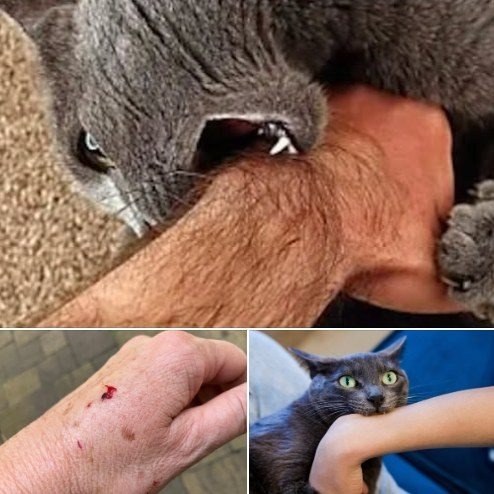Cats are some of the most captivating companions we invite into our lives. They move with elegance, leap with startling precision, and curl into our laps as though they’ve known us forever. But they also come with quirks that keep us guessing. Unlike dogs, who tend to wear their emotions openly, cats express themselves with subtle signals—arched backs, flicking tails, slow blinks, and sometimes, teeth. Few behaviors confuse cat owners more than biting.
When a dog bites, it’s usually easy to label—playful, warning, or aggressive. With cats, however, the story is more nuanced. A cat’s bite can signal affection, overstimulation, fear, or even pain. Understanding the context of biting is not just about avoiding scratches; it’s about deepening your relationship with your feline friend and learning to respect the complex language they use to communicate.
Playful Biting: Practicing the Hunt
One of the most common reasons cats bite is play. For kittens, in particular, the world is a playground, and their mouths are tools for exploration. They chase, pounce, swat, and nip in bursts of energy that mimic the skills they would need to hunt in the wild. These playful bites are usually light, more like pinches than punctures, and rarely break the skin.
But as cute as it might seem to let a tiny kitten gnaw on your hand, this behavior can quickly become problematic if allowed to continue into adulthood. What feels like harmless mouthing in a six-month-old kitten can turn into painful nips when the cat is fully grown. Redirecting this instinct toward toys—feather wands, stuffed mice, or even crumpled paper balls—teaches the cat to play appropriately without treating your hands and feet as prey.
Love Bites: Affection with an Edge
Perhaps the most surprising form of biting is the so-called “love bite.” This usually happens during moments of affection, when your cat is purring, kneading, or stretched across your lap. Out of nowhere, you feel a gentle nibble on your hand or arm. It’s not hard enough to hurt, and the cat often resumes cuddling immediately afterward.
Far from aggression, this nibble is often a sign of affection and trust. In feline social behavior, gentle nipping can be part of grooming or bonding. Your cat may be treating you as part of its family, communicating closeness in its own quirky way.
But sometimes, a love bite can turn into a warning sign. Cats can only tolerate so much petting before it tips from pleasurable to overwhelming. If your cat suddenly nips during a cuddle session, it may be saying, “That’s enough for now.” Paying attention to cues—twitching tails, shifting ears, or restlessness—can help you end the interaction before it reaches that point.
Overstimulation: A Bite as a Boundary
Cats have very specific limits on how they like to be touched. Areas like the belly, paws, or tail base can be particularly sensitive. Too much stimulation—even in safe areas like the back or chin—can cause irritation. A quick bite in these moments is not a declaration of hostility but a clear boundary marker: “Stop.”
Respecting this bite builds trust. If you acknowledge the signal and give your cat space, you show that you understand its boundaries. Ignoring it, however, risks teaching your cat that biting harder is the only way to be heard.
Fear and Stress: Defense in Disguise
Not all bites are gentle. A cat that feels cornered, threatened, or startled may lash out with sharp, painful bites. These are defensive, a survival reflex to protect themselves when escape feels impossible. Unlike playful or affectionate bites, stress-induced bites often come with other warning signals: dilated pupils, flattened ears, arched backs, or hissing.
Creating a calm environment can help reduce these incidents. Offering hiding spots, avoiding sudden loud noises, and allowing your cat to initiate interactions all minimize the likelihood of fear-based biting. For anxious cats, even small adjustments like moving their litter box to a quieter space can make a difference.
Pain or Illness: When Biting Is a Red Flag
Sometimes, biting is less about behavior and more about health. If a normally gentle cat suddenly begins biting without clear cause, it may be signaling discomfort. Dental pain, arthritis, skin irritation, or internal illness can all make cats irritable and more prone to lash out.
If biting suddenly appears alongside other changes—reduced appetite, decreased grooming, limping, or withdrawal—it’s crucial to schedule a veterinary check-up. Treating the underlying issue often resolves the biting as well.
Territorial Biting: Protecting What’s Theirs
Cats are territorial by nature. A favorite resting spot, a cherished toy, or even their human can trigger protective behavior. In multi-cat households, this is especially common. One cat may bite another—or even you—when it feels its territory is being invaded. Recognizing this pattern helps you manage space and resources, ensuring every cat has enough to feel secure.
Kittens: Bite Training Starts Early
With kittens, biting is almost inevitable. Their sharp little teeth are part of learning and exploration. But allowing kittens to bite hands or feet reinforces habits that can grow dangerous later. Redirecting them with toys, rewarding gentle play, and avoiding games that encourage biting flesh all teach kittens boundaries early. What you tolerate when they’re small sets the tone for adulthood.
What To Do After a Cat Bite
Regardless of the reason behind it, cat bites should never be ignored. A cat’s teeth are thin and sharp, capable of puncturing deeply and introducing bacteria beneath the skin. Even minor bites can lead to infections if untreated.
If bitten, immediately wash the wound with soap and water, apply antiseptic, and cover with a clean bandage. Monitor for swelling, redness, or increasing pain. If symptoms worsen or the bite is deep, seek medical attention promptly. In some cases, antibiotics may be necessary.
The Bigger Picture: Listening to the Language of Biting
Ultimately, biting is not random aggression. It’s communication. Each nip, nibble, or chomp has meaning behind it. By observing context—whether your cat is playing, purring, stressed, or hurting—you can interpret what it’s trying to say.
More importantly, respecting these signals builds trust. A cat that feels understood is less likely to escalate its behavior. It learns that gentle cues are enough, and the bond between you grows stronger.
Cats are mysterious creatures, often balancing between independence and affection. Their biting behavior, puzzling as it may be, is simply another facet of their unique way of connecting with the world. The key lies in listening, watching, and responding with patience.
So the next time your cat bites, don’t see it as a betrayal. See it as a message. Ask yourself: Is this play? Affection? A limit? Fear? Pain? With each answer, you move closer to understanding your cat’s true language. And in that understanding, the bond between you and your feline companion becomes richer, deeper, and far more rewarding.


